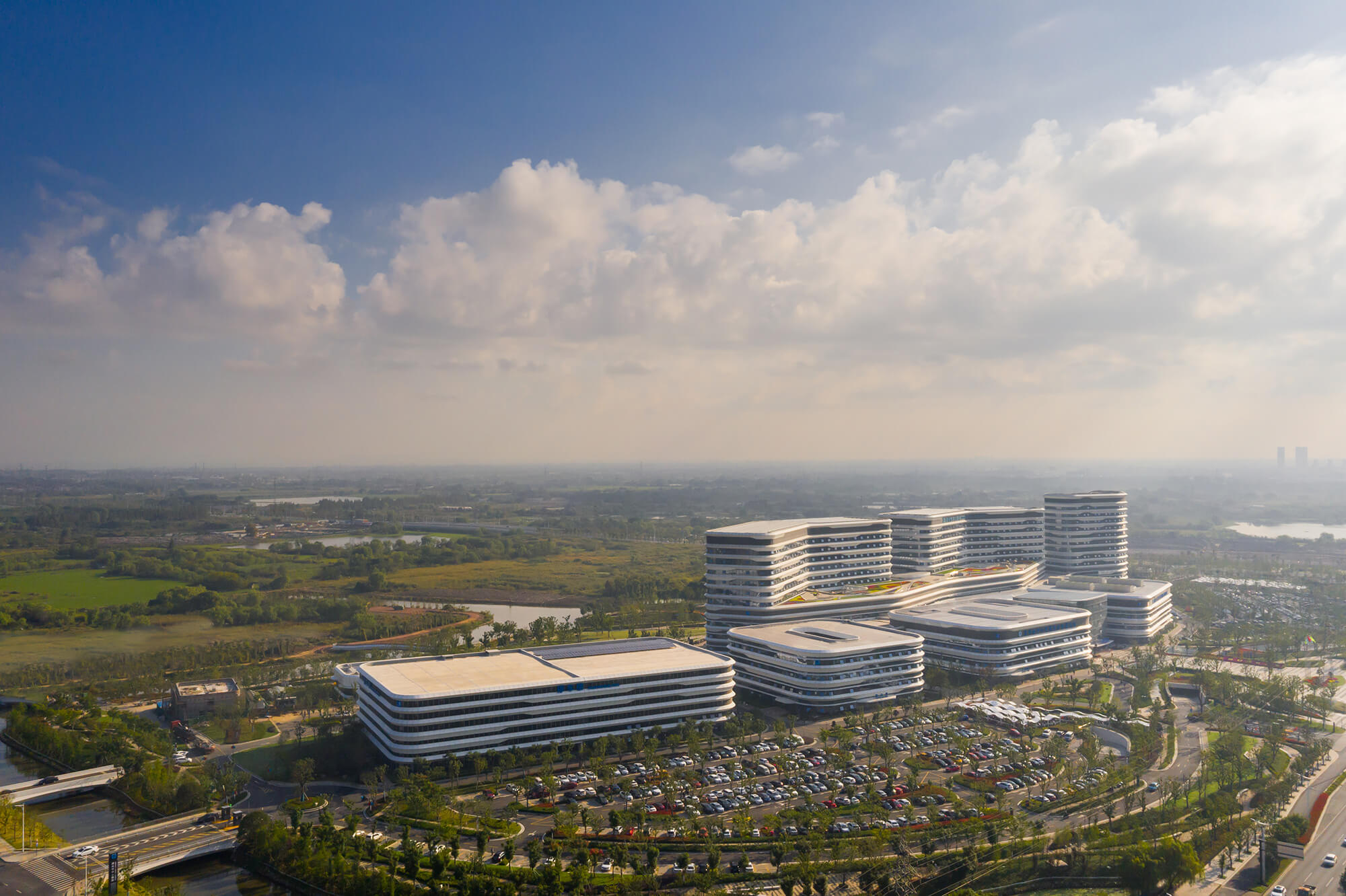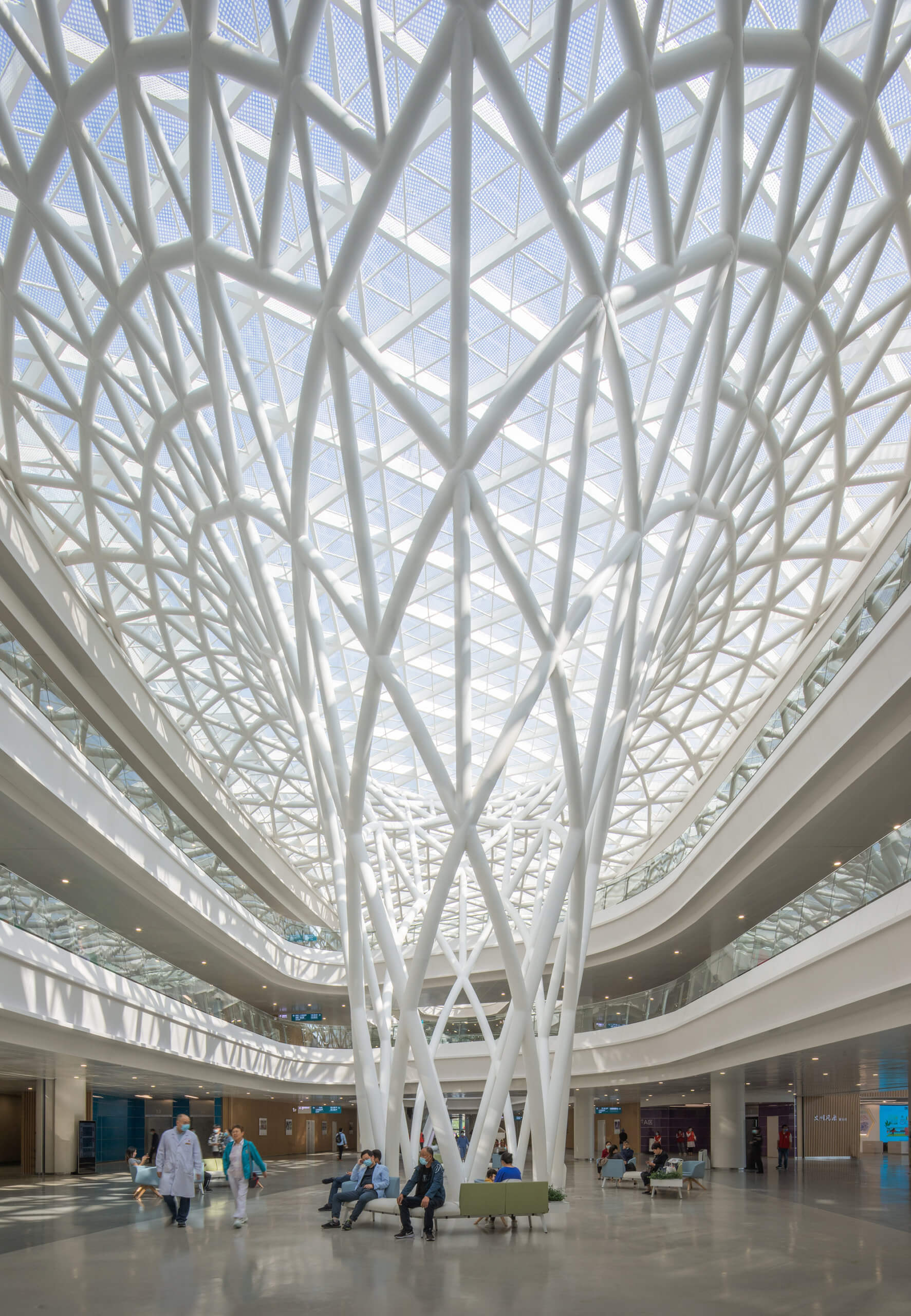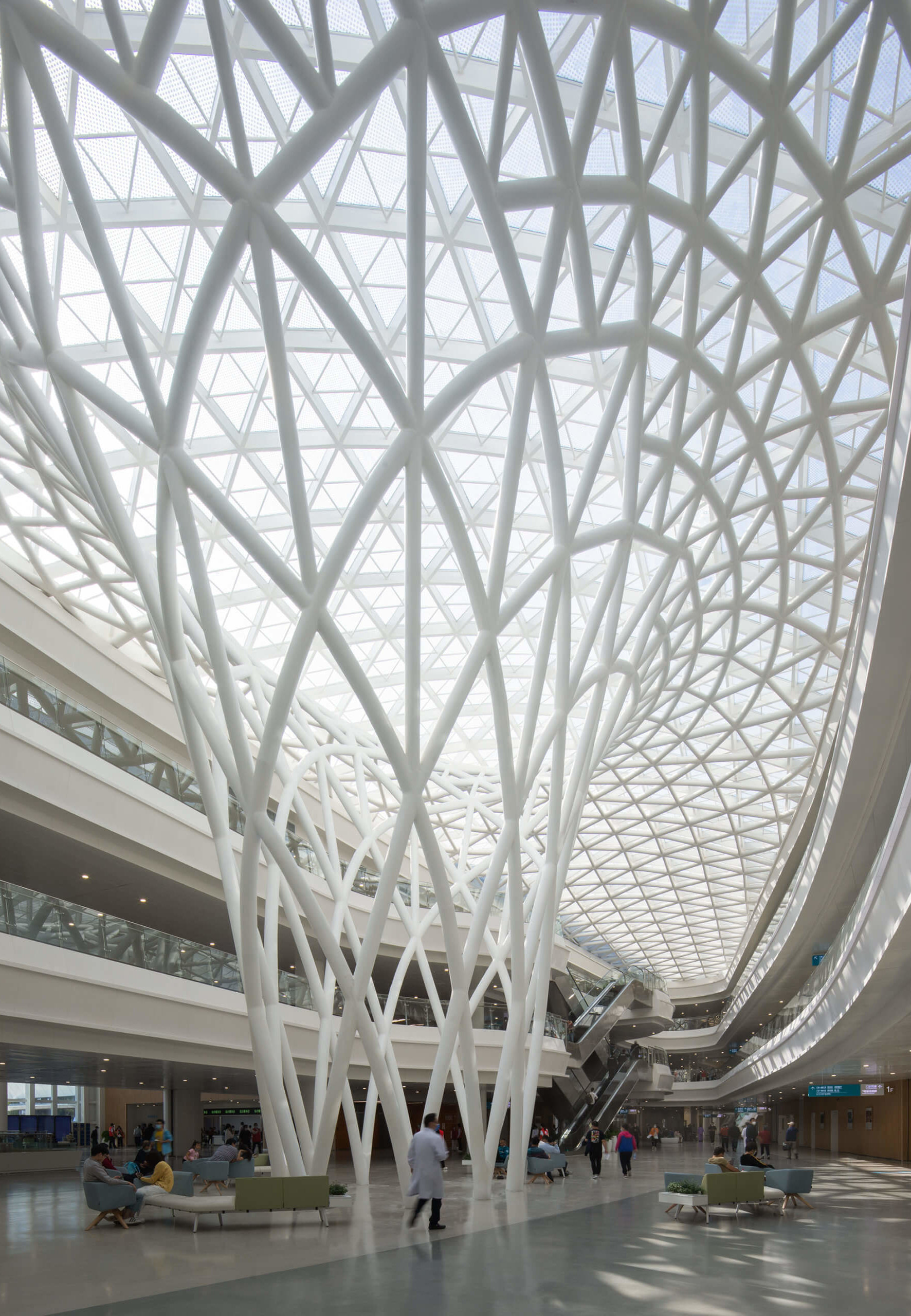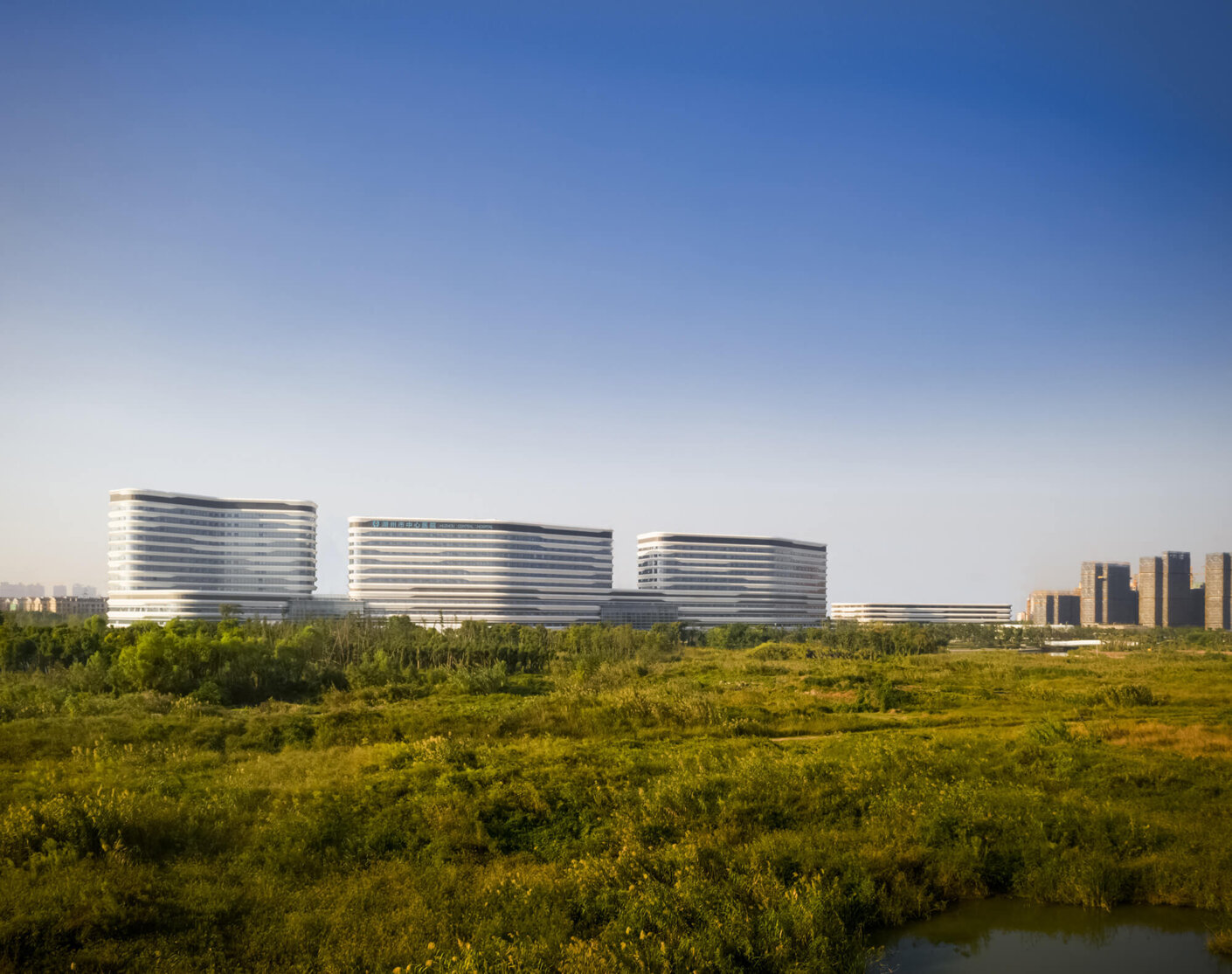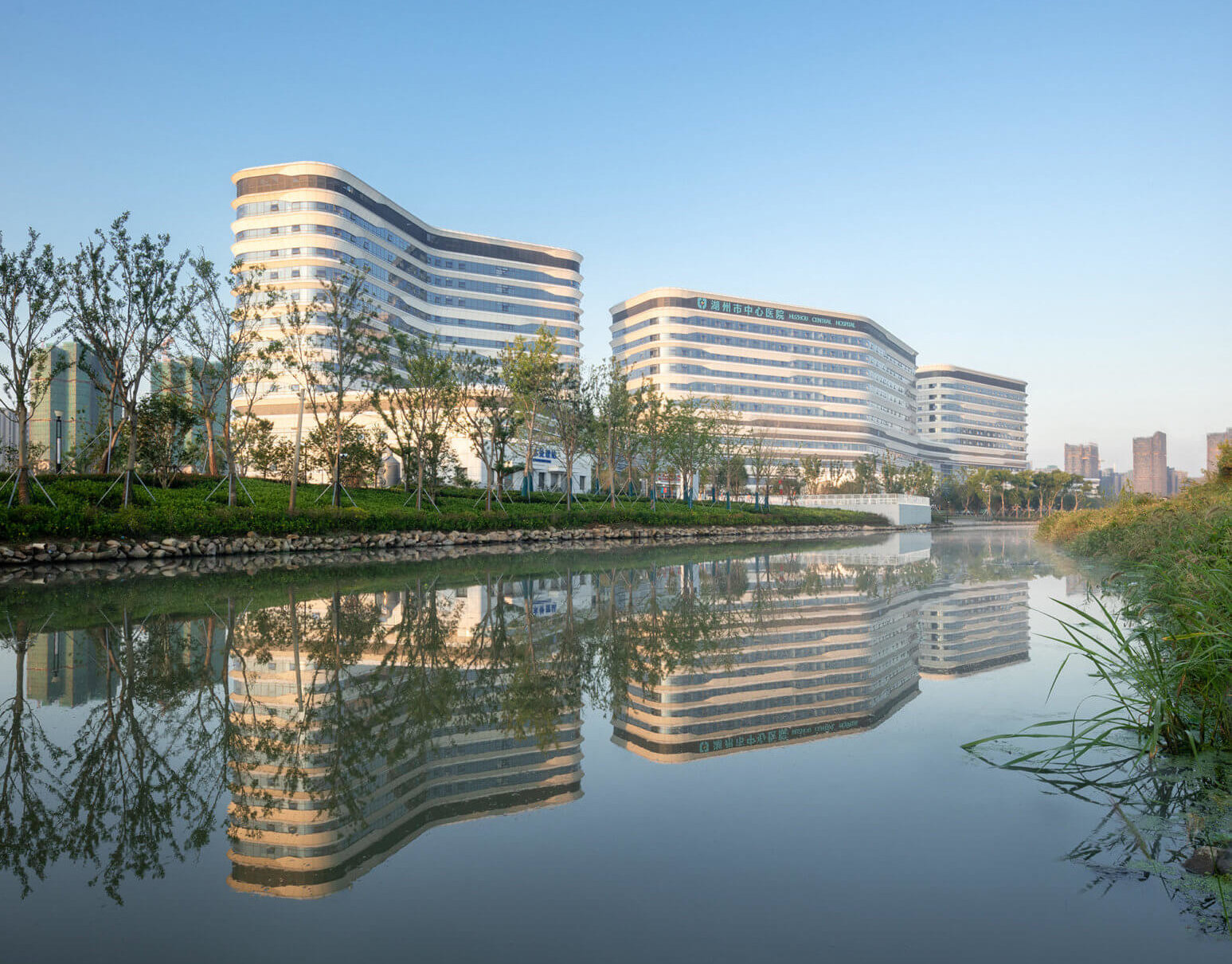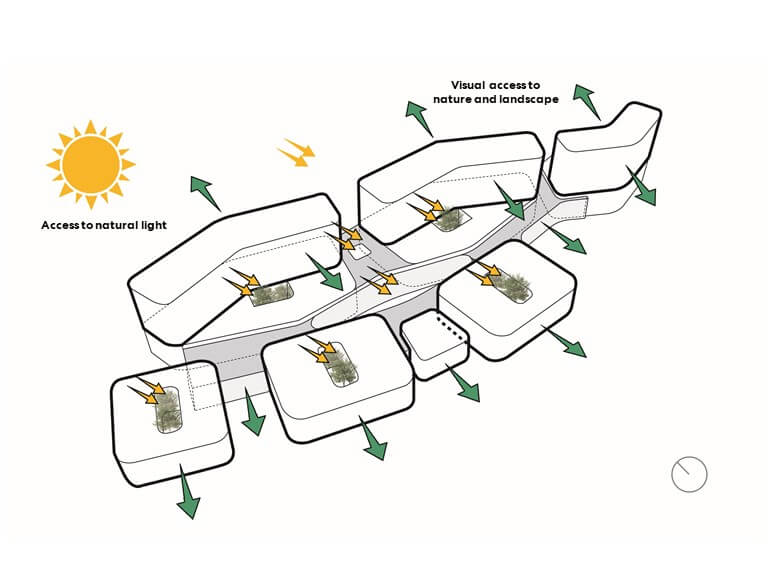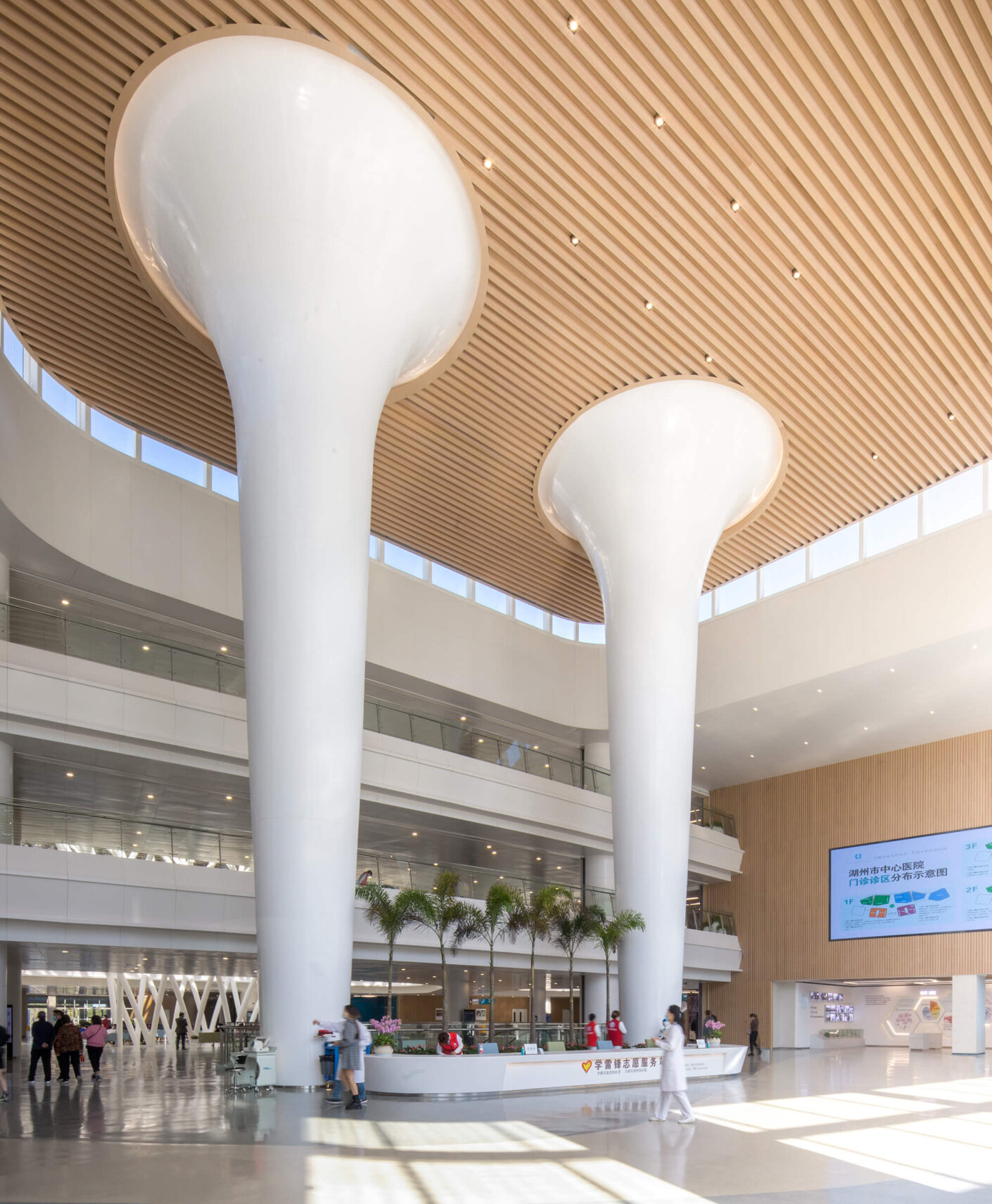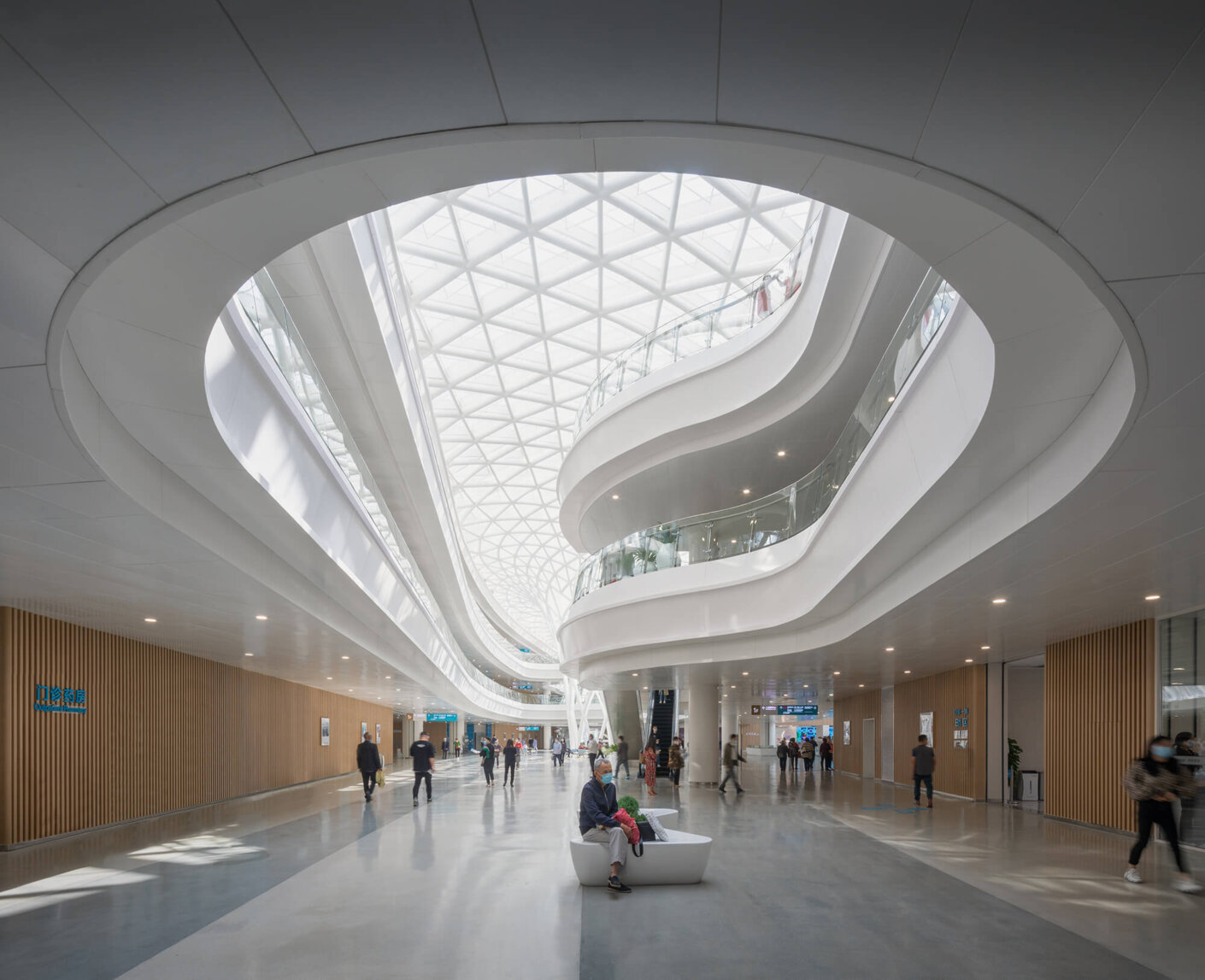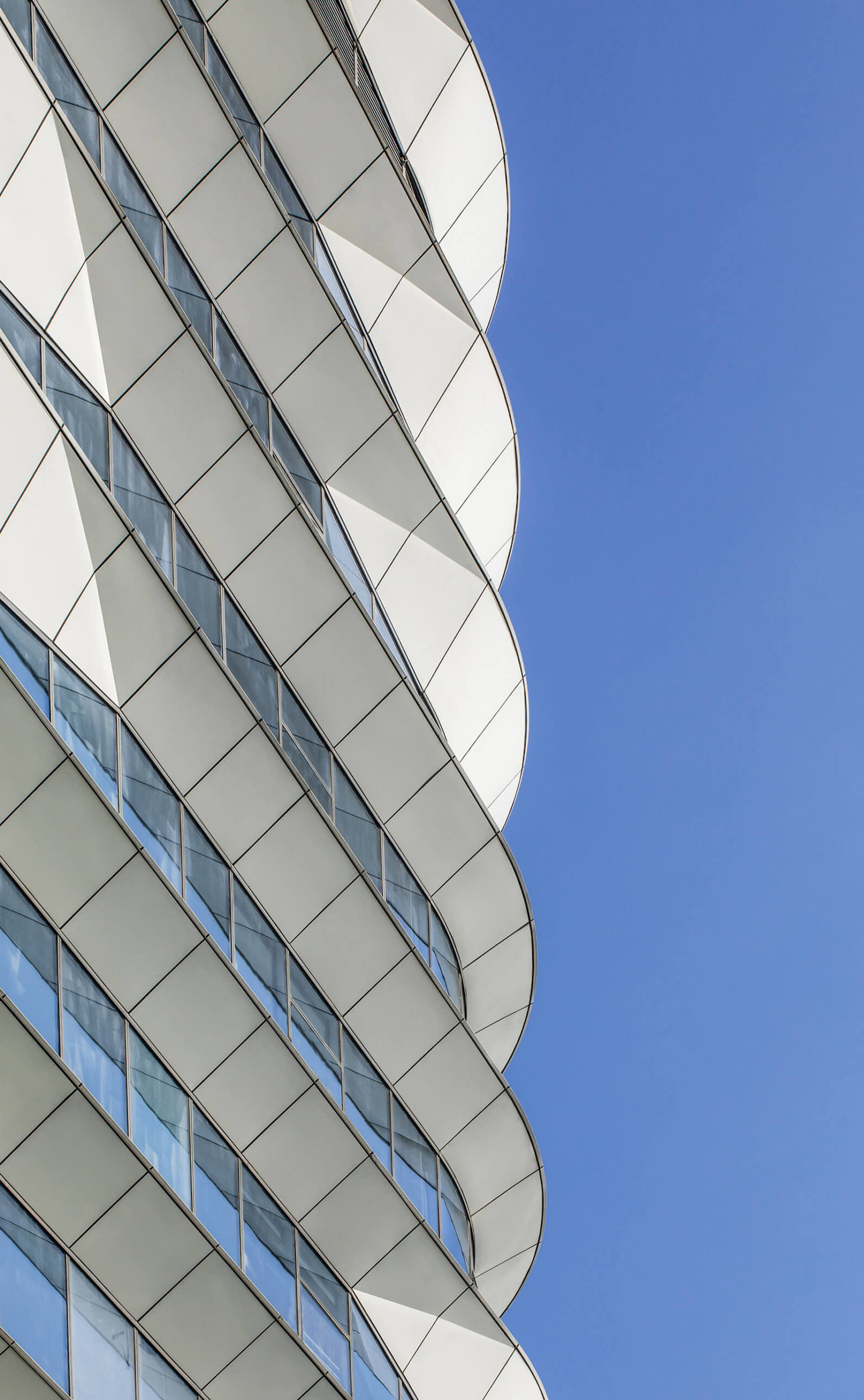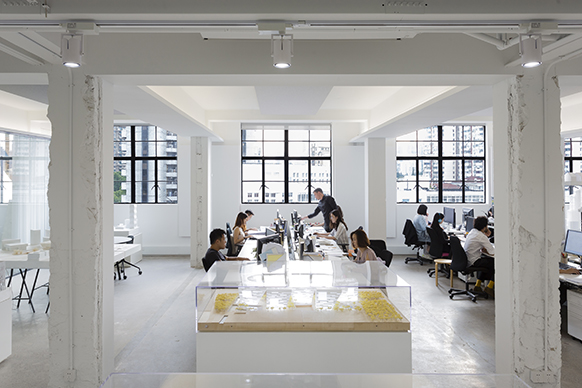The Chinese city of Huzhou is a two-hour drive from Shanghai. Because of its rapid development, the city’s main downtown hospital, Huzhou Central Hospital, had been struggling to meet the growing medical needs of its city’s residents. Not only did the hospital need to relocate to a much larger site to serve more patients, it needed to transform itself into a more inviting and innovative healing space.
With a total building area of 242,000 square meters, with 90,500 square meters of open green space, the project houses 1,500 patient beds and has an outpatient capacity of 6,000 patients per day.
